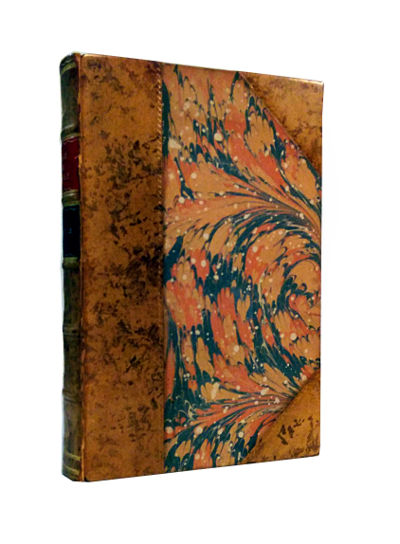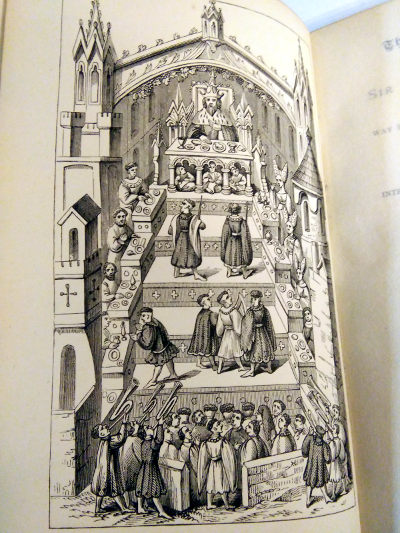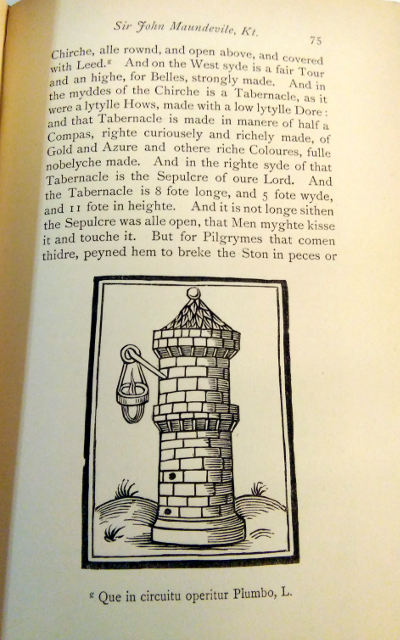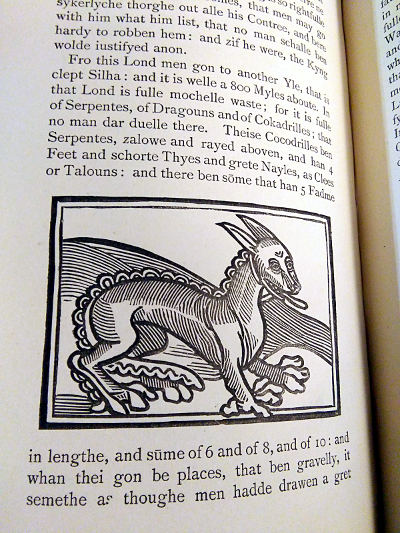About John Mandeville (from Wikipedia):
Sir John Mandeville is the supposed author of The Travels of Sir John Mandeville, a travel memoir which first circulated between 1357 and 1371. The earliest surviving text is in French.
By aid of translations into many other languages, the work acquired extraordinary popularity. Despite the extremely unreliable and often fantastical nature of the travels it describes, it was used as a work of reference—Christopher Columbus, for example, was heavily influenced by both this work and Marco Polo’s earlier Travels.
John de Mandeville crossed the sea in 1322; had traversed by way of Turkey (Asia Minor and Cilicia), Tartary, Persia, Syria, Arabia, Egypt upper and lower, Libya, the great part of Ethiopia, Chaldea, Amazonia, India the Less, the Greater and the Middle, and many countries about India; had often been to Jerusalem, and had written in Romance languages as more generally understood than Latin.
The book may contain facts and knowledge acquired by actual travels and residence in the East, at least in the section which treats of the Holy Land and the ways of getting thither, of Egypt, and in general of the Levant. The prologue points almost exclusively to the Holy Land as the subject of the work. The mention of more distant regions comes in only towards the end of this prologue, and (in a manner) as an afterthought. However, this is commensurate with Mandeville’s emphasis on ‘curiositas’—wandering—rather than Christian ‘scientia’ (knowledge).
In his preface, the compiler calls himself a knight, and states that he was born and bred in England, in the town of St Albans. Although the book is real, it is widely believed that “Sir John Mandeville” himself was not. Common theories point to a Frenchman by the name of Jehan a la Barbe (or other possibilities discussed below).
Some recent scholars have suggested that The Travels of Sir John Mandeville was most likely written by “Jan de Langhe, a Fleming who wrote in Latin under the name Johannes Longus and in French as Jean le Long”. Jan de Langhe was born in Ypres early in the 1300s and by 1334 had become a Benedictine monk at the abbey of Saint-Bertin in Saint-Omer which was about 20 miles from Calais. After studying law at the University of Paris, Langhe returned to the abbey and was elected abbot in 1365. He was a prolific writer and avid collector of travelogues, right up to his death in 1383.







